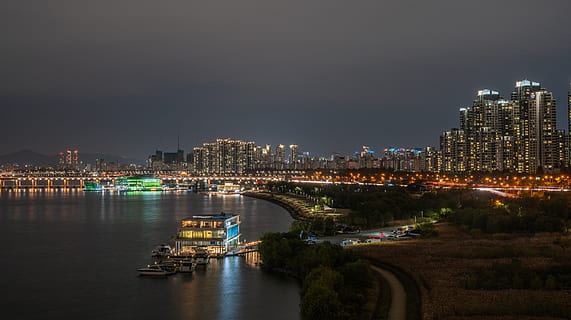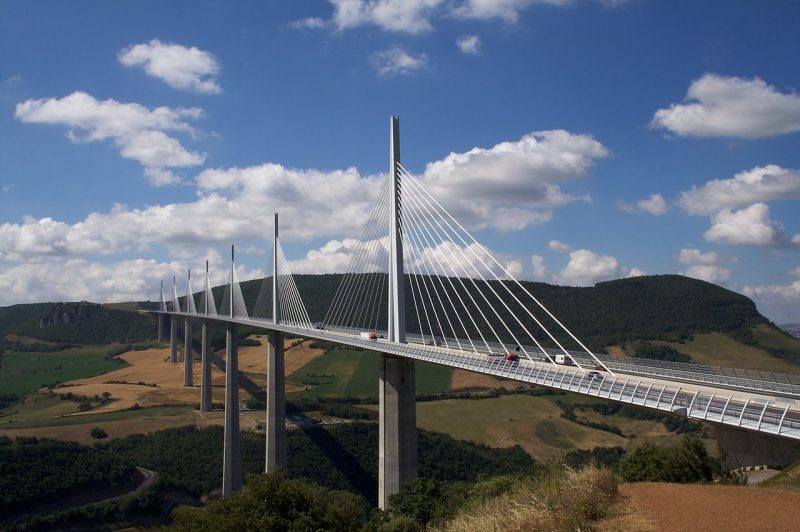Fiber concrete takes up the composition of traditional concrete by adding fibers (mechanical, organic, or mineral), which improve its performance according to the intended use. Between advantages and disadvantages, your building contractor will need to know the following vital information to choose the fiber-reinforced concrete that best suits your large construction project.
The different types of fiber-reinforced concrete

Principle
The composition of fiber-reinforced concrete is very close to that of traditional concrete. To the usual mixture of cement, sand, gravel, and water are added fibers of different natures. They can be metallic, organic, or ceramic. To guarantee the fluidity of the mixture, admixtures are often added. The fibers are of different sizes (from 5 to 60 mm long) and are dosed between 0.5 and 2 % of the total volume, IE. between 5 and 150 kilos per square meter of concrete. Each type of fiber has its characteristics and advantages.
Metallic fibers
Metallic fibers include steel, stainless steel, and cast iron. The resulting concrete has excellent tensile and flexural strength. The risk of cracks is also reduced.
Caution: to contain metal fibers, the concrete must have a compression strength class of at least C30/37. The use of concrete containing structural fibers is prohibited in areas of moderate seismic risk and above.
Organic fibers
Organic fibers include acrylic, aramid, carbon, kevlar, polyamide, polypropylene, polypropylene/polyethylene. The resulting concrete offers a reduction in cracking at a young age.
Molding is precise, but this type of concrete is not very resistant to high temperatures.
Mineral fibers
Mineral fibers include basalt, mica, glass, and wollastonite. They offer good thermal insulation and excellent fire resistance that allows the production of, particularly thin walls.
Why use fiber concrete?
Advantages and disadvantages of fiber concrete
The qualities of fiber-reinforced concrete vary according to the nature of the added fibers. But generally speaking, fiber-reinforced concrete is lighter than ordinary concrete and easy to work with. It is also generally more resistant to wear, impact, abrasion, traction, and bending, as well as fire. The risk of micro-cracks is also reduced.
Note: fiber-reinforced concrete is often used as a replacement for reinforced concrete. Regarding the disadvantages, it should be noted that fiber-reinforced concrete is more expensive than traditional concrete.
For which uses?
Fiber-reinforced concrete is used in many areas, both indoors and outdoors: slabs, floors, facade cladding, etc. It is also applied in many ways. It can be prefabricated (segments or beams, for example), poured (floors, slabs), sprayed (wall or facade reinforcement), or used as mortar (sealing, coating).
Prices and points of sale
You can find fiber-reinforced concrete in DIY stores, specialty stores, and on the Internet. Count about $10 per bag of 30 kg and around $70 per m² for a fiber-reinforced concrete slab laid by a professional.
Concrete technology: Ultra-high performance fiber-reinforced concrete
Concrete technology has been continuously evolving in recent years. Research into formulation materials has led to the creation of better-performing concrete for multiple uses. Ultra-high performance fiber-reinforced concrete (UHPC) is the latest in this line of highly resistant concretes. This concrete is composed of fibers that allow the creation of structures without reinforcements.
Characteristics of ultra-high-performance fiber-reinforced concrete

Ultra-high performance fiber-reinforced concrete formulation
The formulation of ultra-high-performance fiber-reinforced concrete is based on two essential principles: reducing the water content to reduce the porosity of the concrete through the addition of superplasticizers, and optimized granular composition.
Indeed, the size and type of grains are carefully studied upstream to limit air voids that can weaken the concrete. Ultra-high performance fiber-reinforced concrete is made up of grains of different sizes. Smaller grains are preferred to obtain more compact concrete.
The added metal fibers are of 2 to 3% of the volume (160 to 240 kg/m³) and have a diameter not exceeding 0.3 mm.
Characteristics of ultra-high-performance fiber-reinforced concrete
Ultra-high performance fiber-reinforced concrete is a cementitious matrix material with high mechanical properties. This increased resistance is obtained due to fibers that are particularly resistant in traction (between 5 and 12 MPa) and compression (between 130 and 250 MPa).
A second characteristic is its durability linked to its lower porosity and its resistance to shocks and chemical aggression.
Finally, ultra-high-performance fiber-reinforced concrete has the particularity of deforming without fracture due to the tensile strength of the fibers composing it.
Note: the unit of measurement used for compression and traction is the megapascal (MPa). Compression is the stress exerted by two opposing forces that will crush an object and tend to shorten it. Tension is the stress applied to an object when it is stretched.
Using ultra-high-performance fiber-reinforced concrete

Ultra-high performance fiber-reinforced concrete structures offer high mechanical resistance to compression and traction. Thus, this type of concrete is used to construct structures requiring a compression strength greater than 150 MPa.
Examples include the construction of structural elements of structures such as bridges, particularly the Sherbrooke footbridge in 1997, the Seoul footbridge in 2002, and the Millau Viaduct in 2005. Ultra-high performance fiber-reinforced concrete can also be used to reinforce or repair specific structures in the architectural field. Last but not least, ultra-high-performance fiber-reinforced concrete is more expensive than regular concrete because of its specific formulation. This concrete has high mechanical characteristics reserved for exceptional structures and is supplied exclusively by concrete batching plants. Each plant applies a different price depending on the specificity of the formulation.
Altogether, if you are looking for a building construction professional who understands all the technicalities of fiber-reinforced concrete, leave your comments in the section below. We’ll get back to you.
Pingback: Building and Construction: What is Printed Concrete | Building construction blog